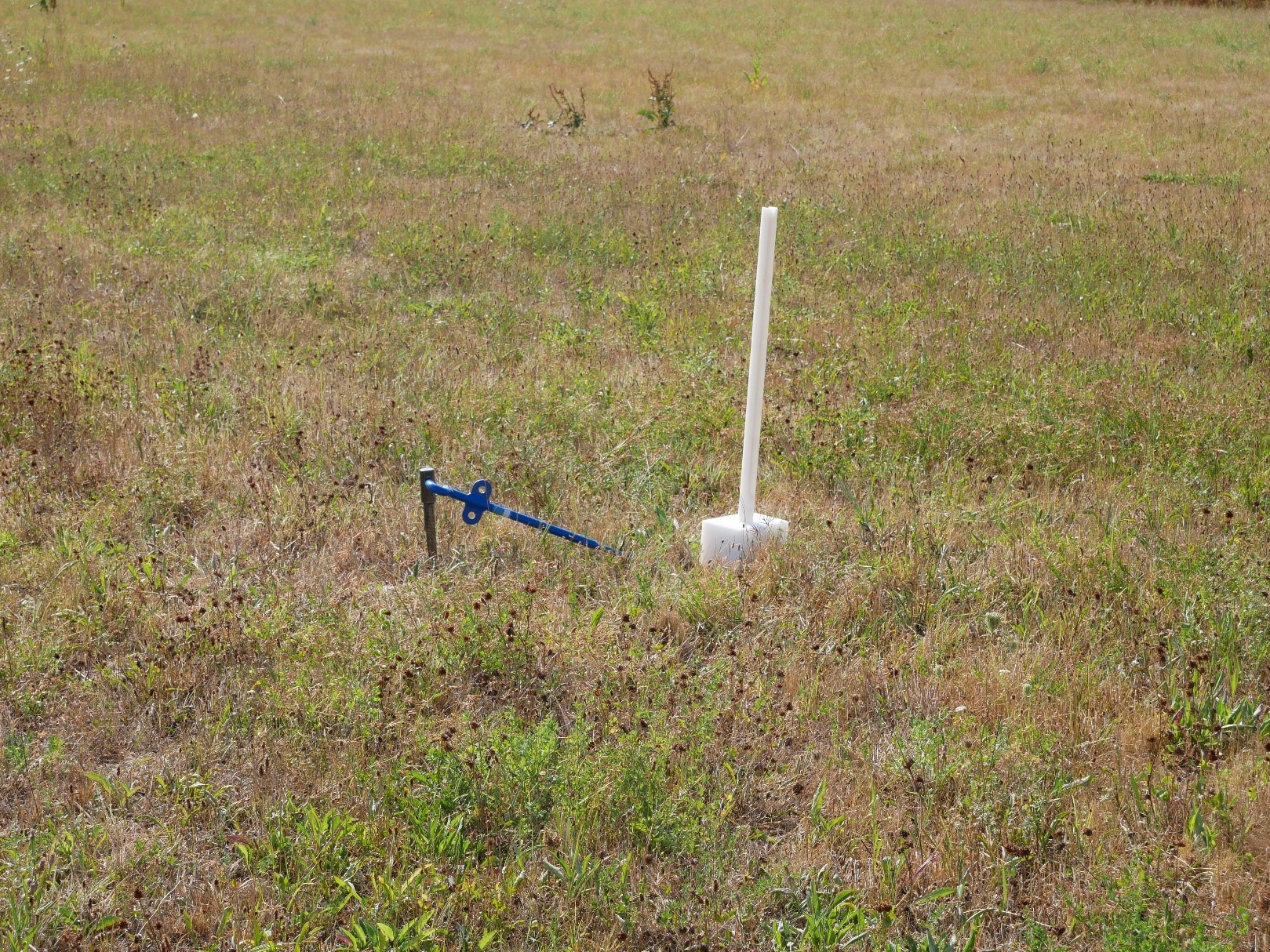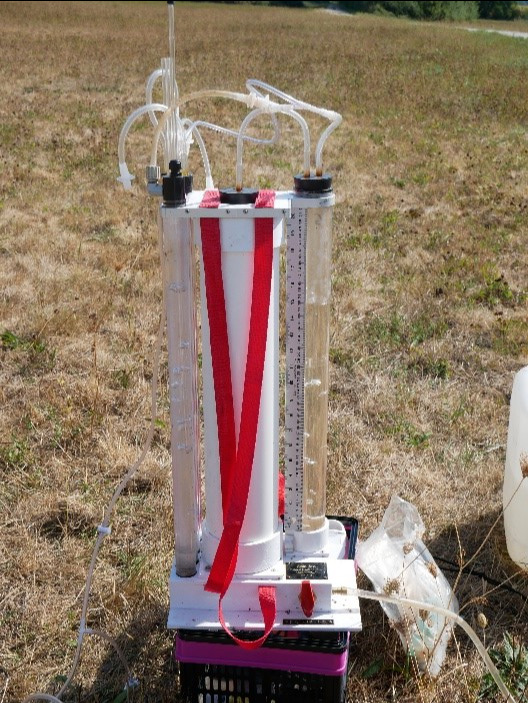Soil investigations are carried out over the three water protection areas (WSG) Balzhofen, Landmatt and Kappler Wald. This is coordinated and carried out by Tino Degenhardt, PhD student at the Karlsruhe Institute of Technology, AGW. Work began in August with the Balzhofen WSG, followed by work in the Landmatt WSG in October. Since November, field investigations have also been carried out in the Kappler Wald WSG.The work is almost completed, but there are still some follow-up investigations in all WSG.
These were infiltration and permeability measurements (right picture), sampling by a drill stick (Pürckhauer, left picture) and sampling with a stabbing cylinder in the field. Infiltration is used to test how fast precipitation can penetrate (infiltrate) into the soil. Permeability measurements are concerned with the rate at which water percolates into the soil. By looking at the soil through the pürckhauer, it is possible to observe the texture, color, pH content, and more down to a depth of 1 m in-situ ("in place"). Finally, important parameters for modeling the infiltrated stormwater, such as the suction tension of the soil, so-called pF curves, can be determined by sampling soil material through puncture cylinders in the laboratory.
The area-wide execution of the listed methods makes it possible to detect local variances in the soils and to draw conclusions about the soil-water balance in the water protection areas depending on the soil type. This is important for answering the question of how to optimally protect and maintain biodiversity and the ecosystem in times of climate change.


